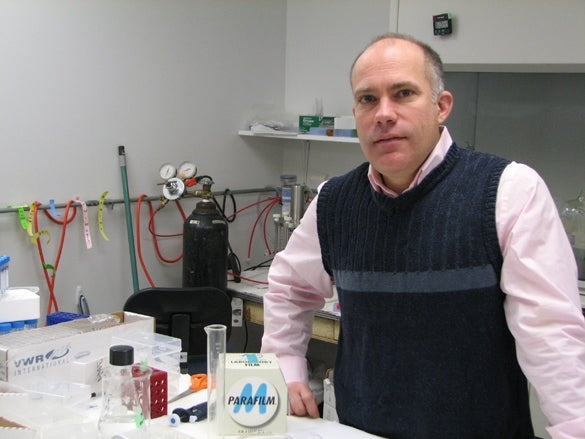As Central Massachusetts continues to see a steady expansion in biotechnology, many of the region’s players, both large and small, are involved in a hard-fought battle to increase National Institutes of Health (NIH) funding, the lifeblood for scientific research.
Dennis Vaccaro, chairman of Biophysics Assay Lab Inc. in Worcester, which manufacturers products and tools used by medical researchers primarily studying blood flow and kidney function, said lack of federal investment in NIH funding has meant “the squeeze is on” for all scientific researchers.
“It’s not just academic ideas,” he said. “There is new technology that is not happening because of the grant situation, even at a little place like ours.”
Vaccaro also said that he’s had several solid grant proposals rejected by the NIH.
“If there was more money, those grants would’ve been funded,” he said. “It’s maddening to be that close, but because of the squeeze, you’re unable to move forward. We try to push these things forward even when we don’t have the grants, but it’s at a much slower speed. In some cases, we can’t even pursue the idea.”
Regional Impact
Biophysics received $795,036 dispersed over three grants from the NIH in 2007. The company is just one of 29 Central Massachusetts companies and colleges to receive funding that year (the most recent year NIH data was made available).
All told, the region scored 398 grants worth more than $140 million.
Johns Hopkins University in Baltimore topped the 2007 worldwide list with 1,369 grants, but Bay State researchers were not far behind. Boston’s Massachusetts General Hospital, Brigham and Women’s Hospital, and Harvard Medical School ranked 15th, 20th, and 37th respectively, while the University of Massachusetts Medical School in Worcester finished 48th with 334 total grants received. All told, the NIH approved 55,131 grants to 2,709 institutions in 2007.
Between 1998 and 2003, the NIH budget doubled, going from $13.5 to $27 billion. From 2003 to 2008, that budget increased an additional $2 billion, but, as research experts point out, that increase over five years did not keep pace with inflation.
John Sullivan, vice provost for research at UMass Medical School, said that because funding increases continue to fall behind inflation, the percentage of approved grant applications to the NIH has “dropped significantly.”
NIH grants represent a significant portion of UMass Medical School’s biomedical research funding, more than 90 percent, in fact. But the school, in contrast to many institutions, has continued to increase its NIH funding over the last few years.
That success stems from a seven-year period during which the school recruited 100 new faculty members devoted to the better understanding of diseases and the discovery of new treatments for them.
“We’ve been fortunate in the sense that there’s still significant money there, and the very best grants will get funded,” said Sullivan. “We will have a significant increase in NIH funding if the budget is increased,” he continued,” but we’ve been able to withstand the funding levels because of the quality of the faculty that we recruited.”
The good news is that with an economic stimulus package on the horizon, the number of local organizations receiving grants and the volume of that funding also could expand.
Looking ahead, an assertive push by the federal government could lift those numbers even higher.
The current draft of the federal stimulus bill — known formally as the American Recovery and Reinvestment Bill of 2009 – is seeking $3.5 billion to fund NIH research and “to improve NIH facilities.” If Sen. Arlen Specter, R-Pa., has his way, an additional $6.5 billion would be invested into the NIH, bringing the total budget increase to $10 billion.
Although such funding increases remain speculative, those at the NIH are already looking ahead to a possible future of greater involvement.
“There are a number of projects that we would very much like to support,” said Lawrence Tybak, acting deputy director of the NIH. “But because of budget restrictions, we just haven’t had sufficient funds. There’s a substantial amount of tremendous opportunity that’s not being realized.
View a list of local companies that received NIH funding in 2007.

